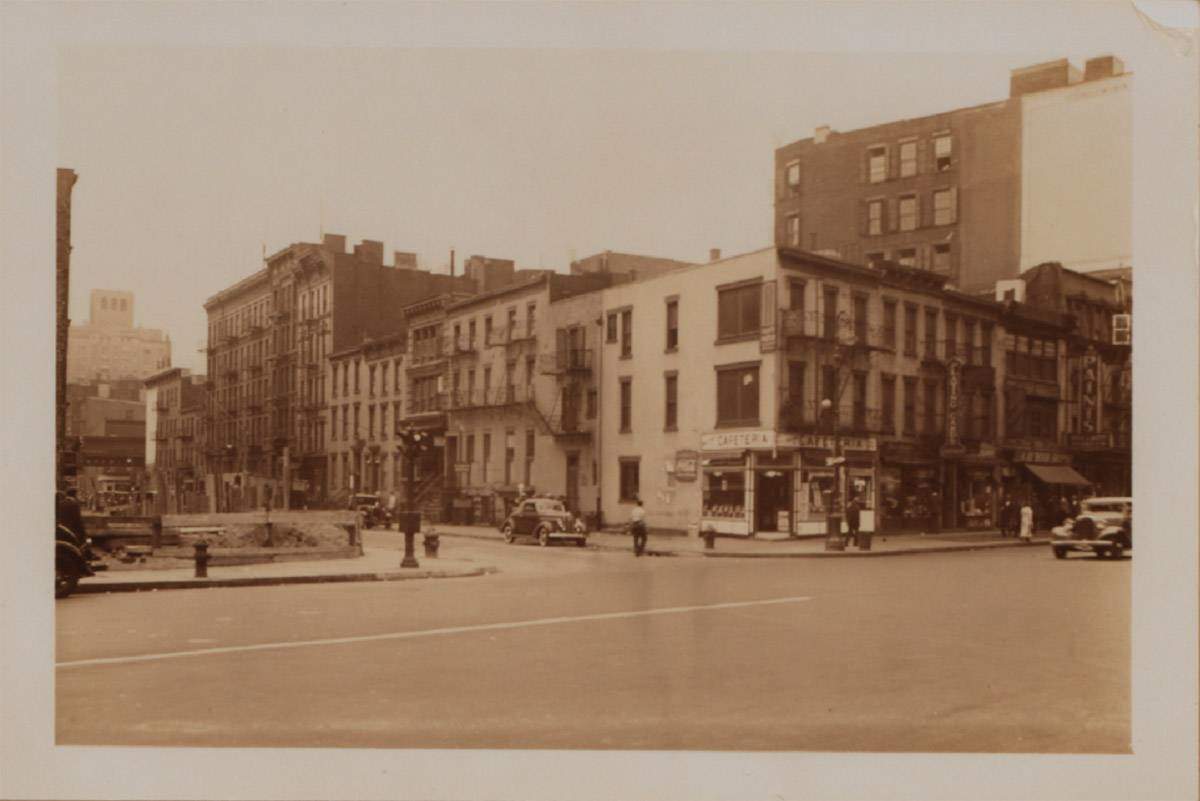The first Moxy Hotel opened in Milan in 2014 with a business plan we’re seeing more and more of these days: just outside the city center, with small rooms, large communal areas, aggressively—and regressively—trendy interiors, in this case featuring a lot of purple neon, and full digital connectivity at all times. Since then, the brand—co-owned in an unexpected pairing by Marriott and Inter Ikea (the furniture maker’s parent company)—has opened five more locations in Europe and the United States, placing some of them well within city centers. The new hotel brand is a play for the younger generation, which has been abandoning traditional hotels in favor of Airbnb and indie upstarts like the Ace Hotel. When all is said and done in this initial push, Moxy expects to boast 150 hotel locations.
One of those locations sits in New York City’s East Village, across from the storied Webster Hall music venue on East 11th Street. A passerby today would note that there appears to be no space on this stretch large enough to accommodate a 300-room hotel. That’s because five 19th century Beaux Arts buildings will have to come down to make room for what Marriott’s VP of brand consulting has called Moxy’s “culture of experimentation.” These are the kinds of gorgeous New York buildings that make one think of West Side Story, of Rent, of a previous century’s immigrant life on the Lower East Side; essentially, of all the things that place New York City so firmly in the cultural imagination. Wrought iron fire escapes cling to their brick facades. Impressive cornices crown them. (They’re pictured at the top of this page.)



Marriott has partnered with the development firm Lightstone Group to execute the project. Lightstone, not Marriott or Inter IKEA, purchased the plots of land, closing on them in April for $52.1 million (as part of a larger deal totaling $127 million). The developer is building five Moxy Hotels total—four in Manhattan and one in Brooklyn.
On August 4th, Lightstone Group filed and received demolition permits for the five buildings, showing a thorough disregard for the fabric of the city it is based in. In anticipation of the filing, four local preservation groups came together to request a hearing for the buildings in front of the city’s Landmarks Preservation Commission. The commission ignored the request and declined to “calendar” it, a move that would have held up demolition at least until a decision could be made about their landmark status. The commission’s failure to consider the buildings for landmark status contradicts its own finding in a 2008 study that found this section of the East Village worthy of such. Only after the demolition permits were filed and brought to the public’s attention by the press did the commission respond to the groups’ request.
The Landmarks Preservation Commission certainly bears much of the responsibility for the loss of these five historic buildings, if it comes to pass, as seems increasingly likely. Of course, so do Lightstone Group, Marriott and Inter IKEA. Other players include Goldman Sachs, whose $85 million loan made the purchase of the buildings possible.
These companies’ gamble must be a calculated one they’ve faced down before, and their approach fairly clear: weather the rage of the locals as the beautiful historic buildings come down, then erect the glassy new hotel and bank on short memories and the blank-slate perceptions of those who had never before walked down this block. Still, they will have diminished the very neighborhood they’re seeking to exploit, very likely creating an eyesore out of what was once a beautiful block.



With the demolition permits filed, is there any sliver of hope for the buildings? Andrew Berman, executive director of the Greenwich Village Society for Historic Preservation, told me that his organization is working with the three others that filed the preservation request to get a meeting with Lightstone and encourage a change to its plan from demolition to one of “adaptive reuse,” which would involve incorporating the current structures into the hotel plan.
GVSHP is also looking into any infractions that may have been committed in evicting the buildings’ tenants. If anything was done illegally, Lightstone’s ability to proceed could be compromised. “Dozens of long-term tenants were very quickly removed from the building,” says Berman, “and that does raise some eyebrows.”
Also raising eyebrows are Lightstone Founder and CEO David Lichtenstein’s close ties with New York City Mayor Bill de Blasio. Lichtenstein is a de Blasio appointee on the New York City Economic Development Corporation’s Board of Directors. Lichstenstein also made significant political donations at the bequest of de Blasio’s office earlier this year, which is part of an ongoing investigation. De Blasio supported Lightstone’s massive residential complex in Gowanus, Brooklyn the first building of which opened to tenants in March. The Landmarks Preservation Commission–the only organization that could have stopped the demolition outright–has 11 commissioners, and all are appointed by the mayor.
As this all literally goes down, the Moxy brand continues to court Millennials, yet doesn’t seem to quite understand its own demographic. Part of its homepage copy reads, “…kick back with a Cosmopolitan like the cosmopolitan you are,” in a nod to a cocktail that went out of fashion before the first millennial reached drinking age. (It’s worth pointing out that, like a cosmopolitan, Moxy’s neon purple logo also evokes the 1990s.) It’s not a huge gaffe, but it does suggest the kind of tone-deafness that could lead a large corporation—or in this case, several large corporations in cohort—to attempt to capitalize on the enduring appeal of a historic neighborhood by demolishing a significant swath of that neighborhood’s quintessential architecture.
Marriott International did not respond to an inquiry for this article.







